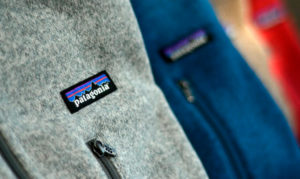Whiplash Team, 15th January 2021
The great challenges that 2021 poses for brands
With the world riding the third wave of the pandemic and new strains of the virus emerging in countries like the UK, South Africa and Japan, we are still far from closing the chapter on COVID-19. The economic consequences of the global health crisis are yet to be revealed in all their magnitude. However, the impact on consumer behaviour in various sectors of the economy, on brands and on how they will face the challenges that 2021 entails, is already a reality.
2020 caused shock waves in the lives of individuals and on the operations of companies and their brands, beyond the long-term consequences it will have on society and in the world economy. Volatility and uncertainty are the hallmarks of the times. Changes happen from one day to the next with a speed that in many cases is, paradoxically, paralysing.
But for companies planning is not optional. They need to have a roadmap and know what actions they will carry out and what resources they will allocate to them. All this in a situation in which knowing what will happen in the coming months is a risky exercise, even more so when it is difficult to predict what measures and changes they will be facing tomorrow.
Consumers, for their part, are in a similar situation. In a context of growing unemployment and economic instability, they have become more cautious and thoughtful when buying. Lockdown and social distancing have changed their way of consuming, and for many brands this has implied a forced leap to the digitalisation of their sales channels.
Thus, at the beginning of 2021, the challenges for brands are multiple. The forecast for the year is that it will be a transition between what will be the new normal and the manner of doing things that will never be the same again.
Consultants such as WARC, Research World, KPMG, McKinsey, and research institutes such as The Marketing Institute agree that 2021 will continue to be disruptive for organizations at different levels. Therefore, the ability to respond with agility both to the needs of consumers and to changes in the environment is another challenge posed by the new reality.
Additionally, it is necessary to keep the digital sales channels and mechanisms to facilitate telecommuting up-to-date and progress with continuous improvements. It is a fact that during 2021 and until the virus has been controlled, staying at home will continue to be persistent. Thus, brands must work on how to be welcomed and become part of the consumer’s home .
In countries with a younger population, an upturn in commerce is expected – mostly on-line. Meanwhile, in those countries like Italy, France or Japan, where the population tends to be older (and less optimistic about what the future holds), the recovery in sales will be slower. In this scenario, China is the exception, with an ageing population, but very optimistic.
Another of the macro challenges identified in various studies is the importance of creating supply chains that guarantee business continuity in situations such as that generated by COVID-19. Companies must have a clear picture of the risks that may affect their purchasing and operations management to guarantee the wholeness and traceability of their processes.
The pandemic has also highlighted the need to be more responsible with the planet and to make structural changes in the economic model and production processes. Thus, perhaps the greatest challenge that brands will have to face is the increasing scrutiny of the consumers in relation to their commitment to sustainability and how their products can improve – or not – people’s lives. The role of brands in society, their contribution to the creation of a more sustainable economy and their purpose, as a drive to improve the environments where they operate, becomes of unprecedented importance. There is no room for inconsistency. The coherence between the purpose, the story and the action will be decisive for brands’ survival.




